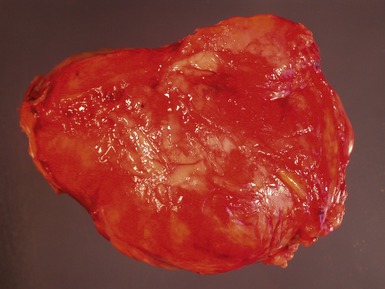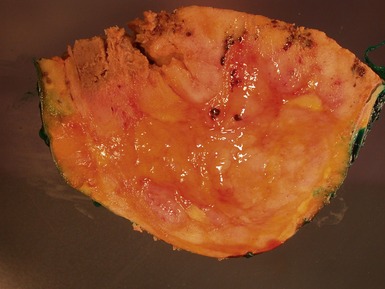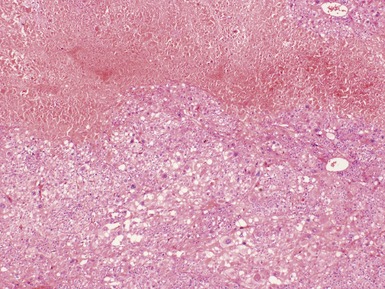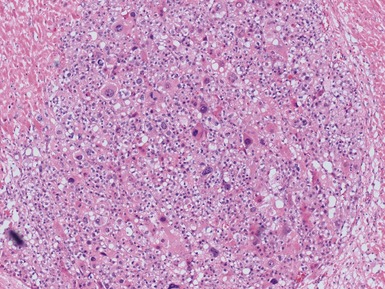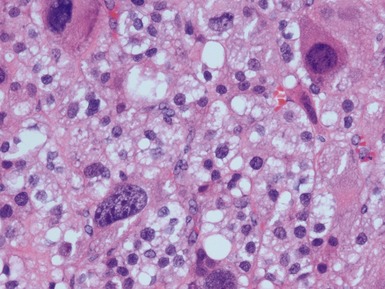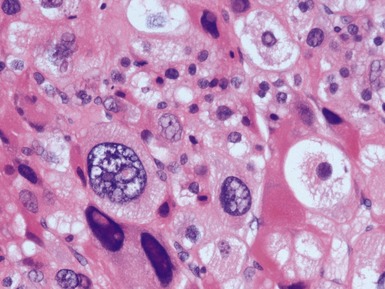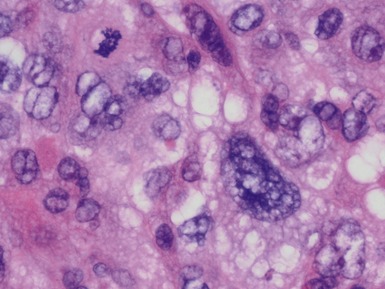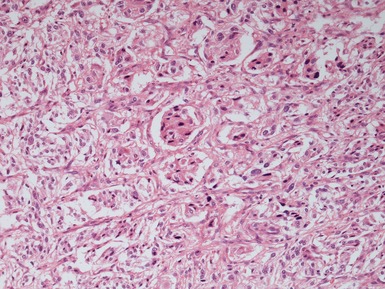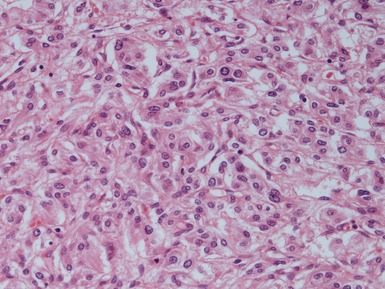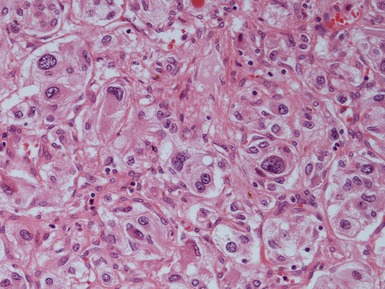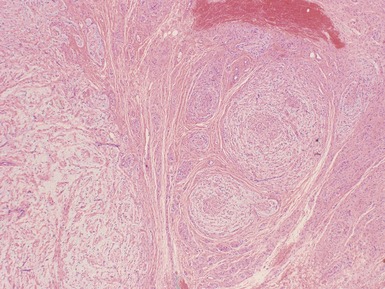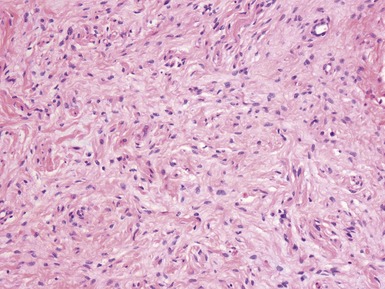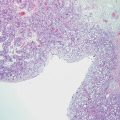CHAPTER 4 ENDOCRINE PATHOLOGY
ADRENAL CORTICAL ADENOMA / CARCINOMA
Histopathological features (Figs 4.1–4.7)
PHAEOCHROMOCYTOMA
Histopathological features (Figs 4.8–4.10)
Differential diagnoses and pitfalls
PREDISPOSING CONDITIONS ASSOCIATED WITH PHAEOCHROMOCYTOMA AND OTHER ENDOCRINE TUMORS
MULTIPLE ENDOCRINE NEOPLASIA TYPE 2 (MEN2)
HYPERPARATHYROIDISM–JAW TUMOR SYNDROME
VON HIPPEL–LINDAU SYNDROME
Astuti D, Douglas F, Lennard TW, et al. Germline SDHD mutation in familial phaeochromocytoma. Lancet. 2001;357:1181-1182.
Cascon A, Ruiz-Llorente S, Cebrian A, et al. Identification of novel SDHD mutations in patients with phaeochromocytoma and/or paraganglioma. Eur J Hum Genet. 2002;10:457-461.
Crossey PA, Eng C, Ginalska-Malinowska M, et al. Molecular genetic diagnosis of von Hippel–Lindau disease in familial phaeochromocytoma. J Med Genet. 1995;32(11):885-886.
Frenzel S, Apel TW, Heidemann PH, Zerres K, Neumann HP, Dörr HG. Phaeochromocytoma associated with a de novo VHL mutation as form fruste of von Hippel–Lindau disease. Eur J Pediatr. 2001;160:421-424.
Lakhani VT, You YN, Wells SA. The multiple endocrine neoplasia syndromes. Annu Rev Med. 2007;58:253-265.
Ribeiro RC, Sandrini F, Figueiredo B, et al. An inherited p53 mutation that contributes in a tissue-specific manner to pediatric adrenal cortical carcinoma. Proc Natl Acad Sci USA. 2001;98:9330-9335.



















